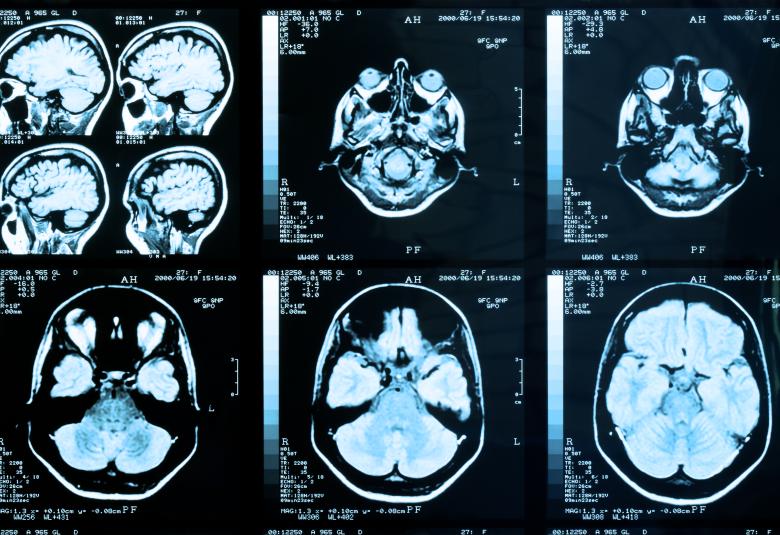Dr Michael F. Green (Geffen School of Medicine, UCLA; VA Rehabilitation R&D Center on Enhancing Community Integration for Homeless Veterans, Los Angeles, USA), presented an industry-sponsored symposium titled ‘Reasons Why People with Schizophrenia Do Not Socially Engage: Problems in Ability versus Deficits in Motivation.’ He first discussed how social processing brain systems may be dysregulated in schizophrenia, for instance, as shown in tests of social cue perception, cognitive reappraisal, mentalizing and social motivation. Here then highlighted how online adaptive social cognitive training and face-to-face motivational interviewing plus cognitive behavior therapy sessions have been shown to help in some of these realms and impact daily functioning.
Potential reasons why patients with schizophrenia do not socially engage
In schizophrenia, brain systems involved in social processing that may be dysregulated include experience and management of emotion, mentalizing, experience sharing and social cue perception.1 According to Dr Green, the latter involves “accurate identification of social information conveyed in cues.” These may include from faces, voices and body movements.2 In patients with schizophrenia differences from controls are shown, using functional magnetic resonance imaging (fMRI), in regions associated with social cue perception, such as lower activation in the amygdala, hippocampus and fusiform gyrus and activation in regions not associated with social cue perception.3
Differences in brain systems involved in social processing in patients with schizophrenia can be visualized using imaging
Regulation of emotion, discussed Dr Green, includes processes by which people influence which emotion is experienced as well as when and how it is experienced. Cognitive reappraisal involves altering an emotional response by changing one’s interpretations of a stimuli.
For instance, in healthy controls, electroencephalogram (EEG) responses to a neutral picture of an edible mushroom, shown in middle and late positive potentials, are much lower than when presented with a negative picture of a snake. However, if the snake is described as harmless, using a ‘regulated’ statement, the late positive potentials lay between those found with the neutral and ‘unregulated’ picture. In patients with schizophrenia though, there are different EEG middle and late potential patterns than controls with little differences between the regulated and non-regulated negative pictures, indicating, said Dr Green, that emotion regulation is not entirely intact in this population.4
In patients with schizophrenia emotion regulation is not entirely intact
Mentalizing is, explained Dr Green, “the ability to infer the mental states of other people, including their intentions, beliefs and emotions.” In a false belief task, where someone is asked to assess a statement that can have a correct or false assumption, there is activation in brain regions associated with mentalizing, including the temporoparietal junction, medial prefrontal cortex and precuneus, with lower activation in patients with schizophrenia.5
Performance measures of social cognition reflect how perception reflects daily functional outcome.6 The question is, asked Dr Green, if brain systems involved in social processing can be improved in patients with schizophrenia. With such goals in mind, online adaptive social cognitive training involving facial recognition of emotions and gaze detection has been utilised7 with significant improvement in patients with schizophrenia. However, these are only in the realms of effect on social cognition composite, not on functional capacity.8
Performance measures of social cognition reflect how perception reflects daily functional outcome
Dr Green also discussed social motivation to approach or avoid others and how, in schizophrenia, social anhedonia may occur.9 Examples he gave of how social motivation can be measured included behaviorally, using a task that estimates the value of social and non-social rewards, by using an EEG to measure anticipation in such tasks and by using fMRI to investigate reward learning on a gambling task.
For instance, in one task, where the goal was to choose the same side of a coin as a computerized opponent, the feedback was money and social reward (neutral face, genuine smile, polite smile) to try and find if someone was more influenced by wanting to win more money or having more rewarding social feedback. One study suggested that the social value of a reward, but not the monetary one, was diminished in patients with schizophrenia.10 Another study showed how accuracy in behavioral response to a social reward selection task was related to self-reported social anhedonia in controls, but not in patients with schizophrenia.11
Training, online or in-person, can impact social functioning
To help patients with schizophrenia and anhedonia with social motivation, Dr Green discussed how he uses 12 sessions of motivational interviewing plus cognitive behavioral therapy to produce “an integrative goal-focused intervention to help with community integration including social functioning.” Unpublished work by his team (Reddy et al, under review) has shown this can lead to decreases in motivational negative symptoms.
Our correspondent’s highlights from the symposium are meant as a fair representation of the scientific content presented. The views and opinions expressed on this page do not necessarily reflect those of Lundbeck.




